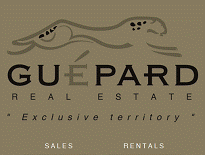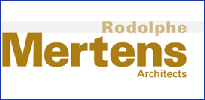Air pollution
Air pollution (Romania)
Why should we care about this issue
Air quality, human health
Key message
Air quality, human health
Air pollution and human health
Airpollution is asevere problem having short, mediumand long-term effects.
Airpollutants haveglobal, regional and local effects. The most important problems generated by pollutant emissions are: acidification, tropospheric ozone production, particulate matter, heavy metal pollution, ozone layer depletion, and greenhouse gas effectsand climatic changes.
The state and impacts
- Source Geocoverage
-
Exceedances of air quality limit values, nitrogendioxide, sulphur dioxide, PM10,ozone, concentrations of pollutants
Key message
Exceedances of air quality limit values, nitrogendioxide, sulphur dioxide, PM10,ozone, concentrations of pollutants
Figures
Exceedances of air quality limit values, nitrogendioxide, sulphur dioxide, PM10,ozone, concentrations of pollutants
Exceedances of air quality limit values, nitrogendioxide, sulphur dioxide, PM10,ozone, concentrations of pollutants
- Data source
- http://www.anpm.ro/upload/14131_SOER%20SO2.xls
Exceedances of air quality limit values, nitrogendioxide, sulphur dioxide, PM10,ozone, concentrations of pollutants
- Data source
- http://www.anpm.ro/upload/14129_SOER%20Ozon.xls
Exceedances of air quality limit values, nitrogendioxide, sulphur dioxide, PM10,ozone, concentrations of pollutants
- Data source
- http://www.anpm.ro/upload/14130_SOER%20PM10.xls
Airquality in Romania is constantly monitored at measuring stations, distributed across the entire territory of the country, which are part of the automatic air quality monitoring network. The concentrations of nitrogen oxide, sulphur dioxide, carbon monoxide, benzene,ozone, particulate matter, lead, and heavy metals are measured.
Exceedances of air quality limit values in urban areas, 2006 – 2008.
For nitrogendioxide, the limit value for the protection of human healthplus a margin of tolerance (LV+MT) was exceeded in 2006 at traffic stations and industrial stations in Bucharest. In 2007, exceedances were registered in Cluj’s urban background station and at traffic stations and one industrial station in Bucharest. In 2008, exceedances were registered in Bucharest at traffic stations and one industrial station, in Braşov at one urban background station and in Constanţa at the traffic station.
Figure1 presents the trends of the annualmean concentrations, in 2006-2008.
For sulphur dioxide, the hourly limit value for the protection of human health was exceededin 2008 in Baia Mare and Copşa Mică. The daily limit value for the protection of human health was exceeded in 2006 in Craiova, at one industrial station, and in 2008 in Drobeta Turnu Severin, Baia Mare and Copşa Mică.
The trends of annual average sulphur dioxideconcentrations in the continually monitored agglomerations overthe last three years are presented in Figure 2.
Annualaverage PM10 concentrations exceeded the annual limit value for the protection of human health in 2006 – 2008 in Bucharest, Craiova, Clujand Iaşi.The exceedances weremeasured at traffic, industrial, urban background and suburban background stations;the trends of the values arepresented in Figure 3.
The trends of annual average ozone concentrations registered in The National Air Quality Monitoring Networkare shown in Figure 4.
The trends of the concentrations of pollutants, in all stations with consistentand comparable measurements, for calendar years 2006, 2007 and 2008, indicate, in general, a slight improvement in air quality (Figure 5).
The key drivers and pressures
- Source Geocoverage
-
Emission trends
Key message
trends of transport in 2008, Annual Report on the State of the Environment in Romania 2008, energy sector, agriculture, industry and tourism
Figures
trends of transport in 2008, Annual Report on the State of the Environment in Romania 2008, energy sector, agriculture, industry and tourism
trends of transport in 2008, Annual Report on the State of the Environment in Romania 2008, energy sector, agriculture, industry and tourism
- Data source
- http://www.anpm.ro/upload/14823_so2inventar.xls
trends of transport in 2008, Annual Report on the State of the Environment in Romania 2008, energy sector, agriculture, industry and tourism
- Data source
- http://www.anpm.ro/upload/14826_nh3inventar.xls
trends of transport in 2008, Annual Report on the State of the Environment in Romania 2008, energy sector, agriculture, industry and tourism
- Data source
- http://www.anpm.ro/upload/14824_noxinventar.xls
The most important determinants of air quality trends are population, industries, transport activity, and the energy sector.
Demographic characteristics – the total number of inhabitants, density and age structure – play a key role in the stateof the environment. Consumptiondetermines the need for resources, goods and services, directly influencing the pressures on the environment.
On 1 January 2008 Romania had 21 528 627 inhabitants, 55.15 % of whom lived in urban areas, corresponding to an average of 90 308 inhabitants/km2.
The transport systems for freightand passengers include: road, rail,inland waterways, sea, air, non-motorisedtransport and special types of transport – through pipelinesand air electric transport.
The trends of transport and actions developed for reducing transport emissions are presented in the Annual Report on the State of the Environment in Romania,2008,(http://www.anpm.ro/files2/TRANSPORTURILE%20SI%20MEDIUL_20091016585921.pdf).
The energy sector is a major contributor to environmental degradation in Romania, as a result of the use of lignite in power stations.Pollution results f rom the production of primary energy, transport, conversion and consumption. The sector contributes to atmospheric emissions of significant quantities of sulphur dioxide, carbon monoxide, carbon dioxide, nitrogen oxides, small particles, as well as residual water discharge.
The reduction of the impact of energy systems on the environment and implementation of the standardsimposed by EUregulations are to be accomplished through: rehabilitation and modernisationof plant, ecologic restoration of cinder yards and ash dumps, continuous monitoring of environmental quality aroundmajor energy installations, rehabilitation of polluted soils and their return to agricultural use, reduction of emissions of pollutants from refineries, reduction of leaks and spills in some oil regions through the reduction of operating risks, and ecologic restoration.
The relevant activities in the energy sector are presented in the Annual Report on the State of the Environment in Romania, 2008, (http://www.anpm.ro/files2/ENERGIA_200910165716890.pdf).
The pressures on the environment generated by agriculture, industry and tourism are presented in the Annual Report on the State of the Environment in Romania,2008, (http://www.anpm.ro/files2/PRESIUNI%20ASUPRA%20MEDIULUI_200910165643562.pdf).
Evaluationof the impactsof atmospheric pollutants onthe environment requires the identificationand quantification theirpotential effects.In order to better understand these impacts, this is done by estimating the emissions of pollutants – inventory, measurements, etc. –and monitoring air quality in order to assessthe effects of the emissions on humanhealth and ecosystems.
The trends of emissions of atmospheric pollutants
Emissions of sulphur dioxide, corresponding to 2008 are characterized by a decrease of over 2.31% compared to 2007, the most important decrease of over 17.64% compared to 2007 being recorded mainly in the "Combustion in manufacturing industries", a dominant sector as share of national SO2 emission.Other significant decreases compared with 2007 were in the "Waste treatment and disposal" (30.08%) and "Non-industrial combustion plants” (6.05%) sectors. Increases have been registered in “Road transport” sector (8.32%), and in "Other mobile sources and machinery” (%) (Figure 6.).
In the last years, the NOX emissions have been characterized by a descending trend, a feature mainly sustained by the modernization of the industrial installations and renewal of the national car fleet, the NOx emission decreases comparative to 2007 is of 4.52%.In 2008, the national NOx emissions have reached the value of 294.985 t. The sectors that represented slight increases in 2008 are "Combustion in manufacturing industry" by 15.56% and "Other mobile sources and machinery" by 9.63%. These increases have been balanced by reductions of NOx emissions in sectors such as:"Road transport” (20.28%), "Production processes" (1.42%) and “Combustion in energy and transformation industries (2.23%) (Figure 7.).
Ammonia emissions have increased during the period 2002 - 2005, reaching the peak of 204.284 t in 2005. Starting this year, the evolution trend of NH3 emissions is decreasing and for the year 2008 a value of 186.561 t was registered. The largest amount of ammonia emissions come from "Agriculture" (90.58% of national total).The other sources are the “Production processes”, having a share of 0.54% (16.352 t), and “Waste treatment and disposal” (8.42%).Small quantities are generated by the emissions directly from soil, “Road transport”, “Non-industrial combustion plants” and “Combustions in manufacturing industry”, all these sources having a contribution of 1.15 % to the national ammonia emissions (figure 8).
The evolution of the NMVOC organic compound emissions is characterized by a decrease of 3.75% in 2008 compared to 2007. In 2008 the NMVOC emissions at national level were of 448.877t. The main volatile organic compounds emission sources are:"Non-industrial combustion plants” (30.23%), “Agriculture” (17.94%), “Road transport" (15.51%), "Solvents and other products use" (15.42%), "Extraction and distribution of fossil fuels” (12.21%).And "Production processes" (5.46%) (Figure 9.).
Nigeria at the mercy of software pirates
News / 新闻
-
07/31/2012Romania
-
07/22/2012Romania
-
07/01/2012Romania
-
07/01/2012Romania
-
06/12/2012Romania
-
05/17/2012Romania
-
05/17/2012Romania
-
05/08/2012Romania
-
04/23/2012Romania
-
12/20/2011Romania
-
10/17/2011Romania
-
10/17/2011Romania
-
10/13/2011Romania
-
10/13/2011Romania
-
10/13/2011Romania
-
08/15/2011Romania
-
08/15/2011Romania
-
07/29/2011Romania
-
07/28/2011Romania
-
07/06/2011Romania
-
01/18/2011Romania
-
01/17/2011Romania
-
08/10/2010Romania
























